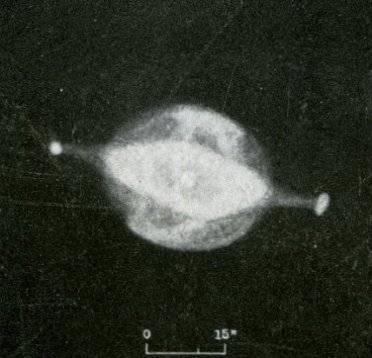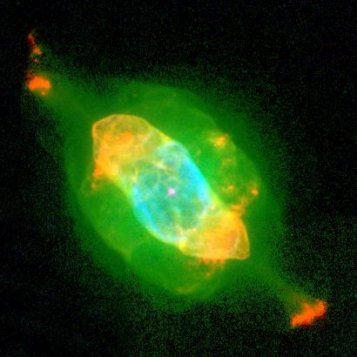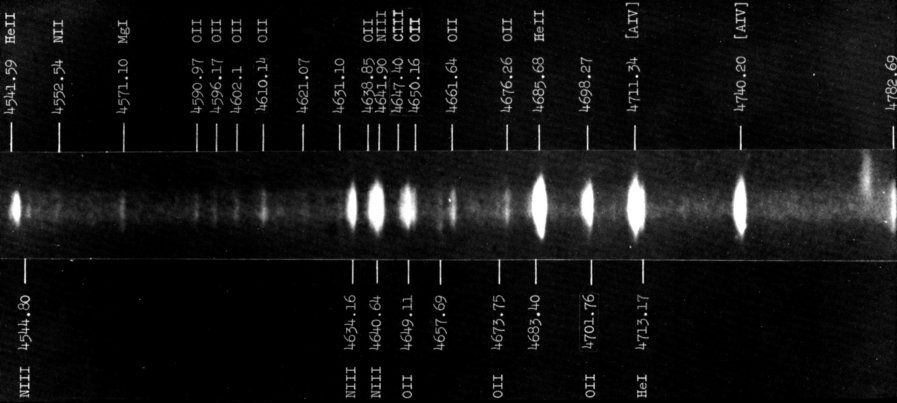 |
| Panel 1. See full
resolution. The second spectrum line from the right is a
flaw. The iconic 4686 line of ionized helium (He II) to the right
of center is very strong, as are the forbidden triply-ionized
[Ar IV] lines. |
|
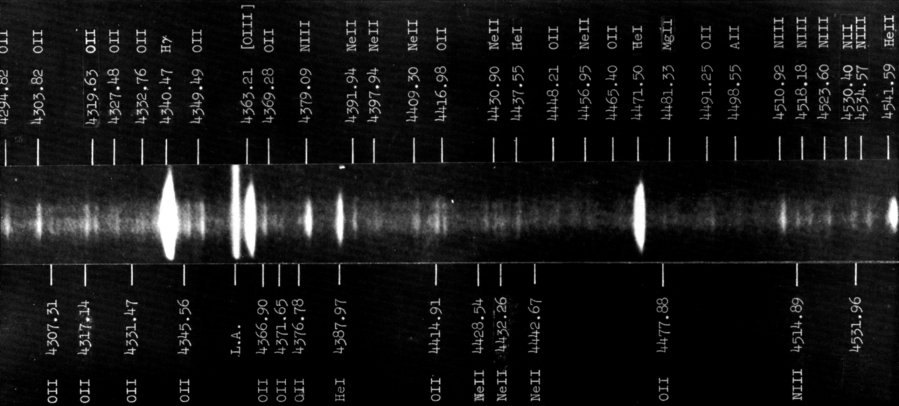 |
| Panel 2. See full
resolution . The spectrum is dominated by the H-Gamma line at
4340 Angstroms toward the left. The [O III] line from doubly
ionized oxygen at 4363 Angstroms is used along with those at 4959
and 5007 Angstroms (the "nebulium" lines: see IC 418 and the Ring
Nebula) to measure nebular temperatures. Just to the left of
it at 4358 Angstroms is a line from Los Angeles street lights
(this and others giving mercury vapor lamps their blue color.) The
strong neutral helium (He I) line at 4471 Angstroms to the right,
along with the 4686 Angstrom He II line seen in Panel 1, is used
to measure nebular helium compositions. |
|
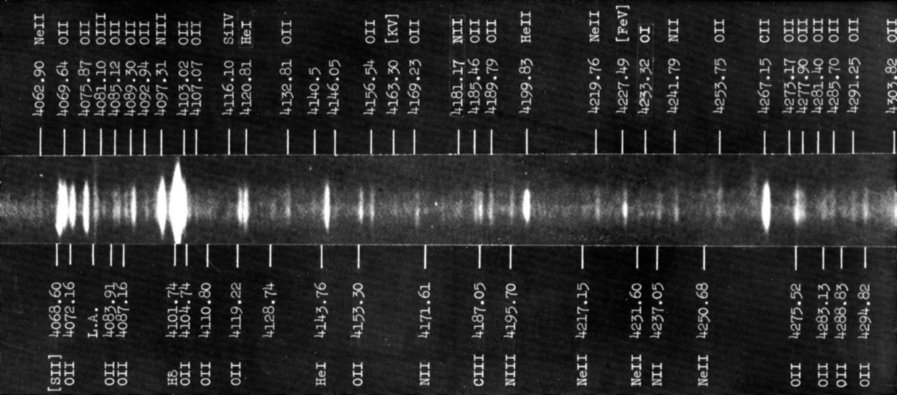 |
| Panel 3. See full
resolution. The spectrum is dominated by the H-Delta line at
4101 Angstroms toward far left. To the right, at a wavelength of
4267 Angstroms, is an important line of ionized carbon (C II) used
to get nebular carbon compositions. |
|
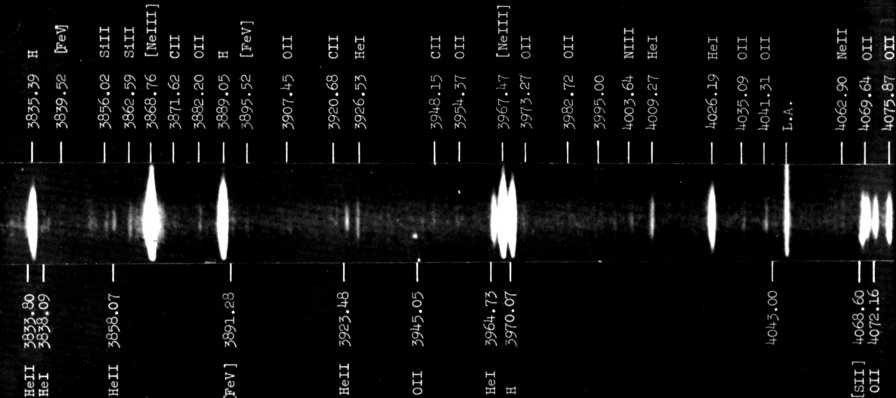 |
| Panel 4. See full
resolution. Three more hydrogen lines, H-Epsilon (or H7) at
3970 Angstroms, H8 at 3889, and H9 at 3835 show the hydrogen
spectrum beginning to pile up toward the limit at 3646 Angstroms
as seen in the next panel. The forbidden doubly ionized
neon [Ne III] line to the left of center at 3868 Angstroms is
crucial for obtaining neon compositions. It is coupled to the
3967 line at center that is usually blended with the hydrogen and
helium lines to either side of it. Note the highly ionized iron
line at 3895 Angstroms. |
|
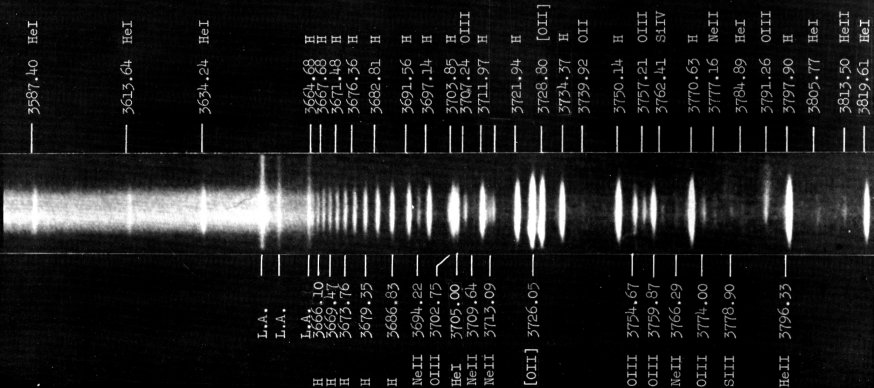 |
| Panel 5. See full
resolution. We arrive at the dramatic confluence of the Balmer
lines and the beginning of the Balmer continuum, which stretches
out to the left. It's marred somewhat by a couple strong lines
from Los Angeles. The critical forbidden ionized oxygen lines at
3726 and 3728, used to derive nebular densities (and together
nebular oxygen compositions), are well separated. At lower
resolution they are often blended into one. |
|
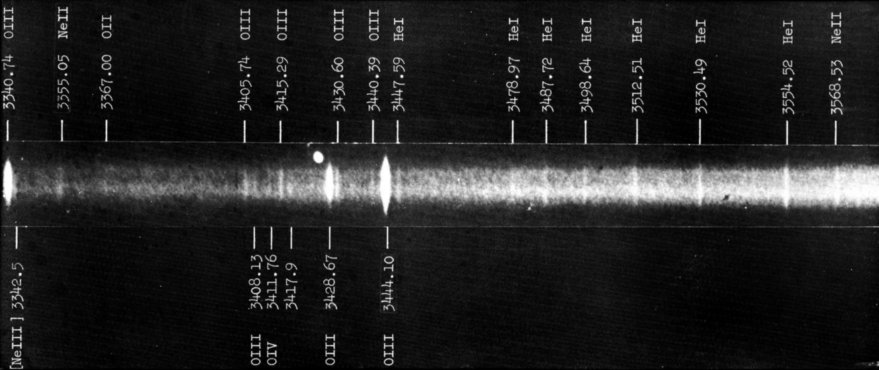 |
| Panel 6. See full
resolution. The Balmer continuum weakens toward shorter
wavelengths; note the strong O III lines from doubly-ionized
oxygen. They are pumped up to higher intensities by a fluorescent
mechanism. Numerous neutral helium lines, which are cascading
toward their own limit, fall to the right of center.
|
|
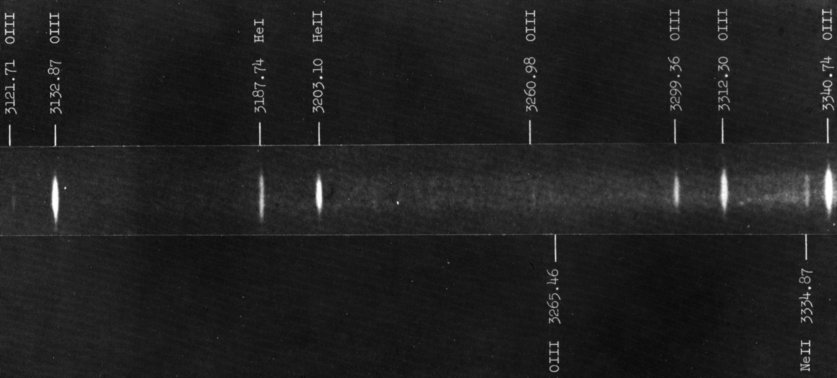 |
| Panel 7. See full
resolution. The 3203 line of He II, coupled to the 4686 He II
line in Panel 1, is also strong as is the last of the observed O
III lines. Beyond this point little radiation penetrates the
Earth's atmosphere, compliments mostly of ozone.
|
